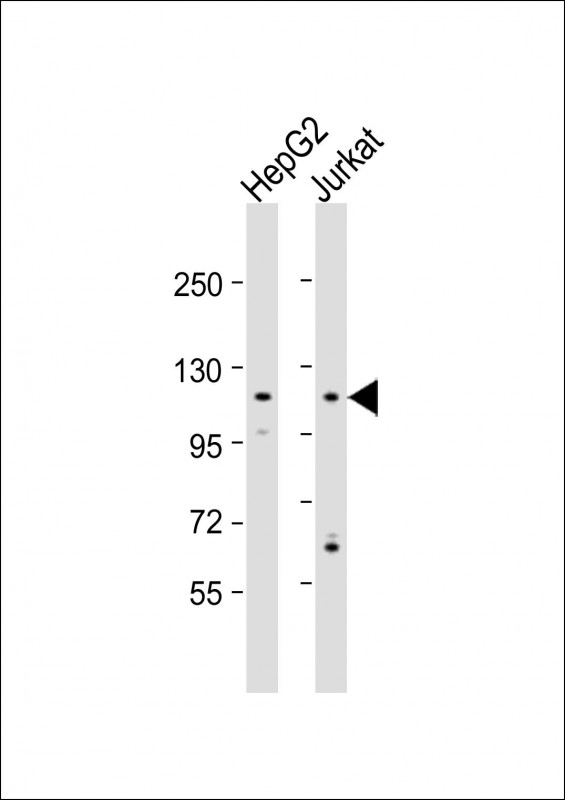
| WB | 1/1000 | Human,Mouse,Rat |
| IF | 咨询技术 | Human,Mouse,Rat |
| IHC | 咨询技术 | Human,Mouse,Rat |
| ICC | 技术咨询 | Human,Mouse,Rat |
| FCM | 咨询技术 | Human,Mouse,Rat |
| Elisa | 咨询技术 | Human,Mouse,Rat |
| Aliases | Alpha-mannosidase 2C1, Alpha mannosidase 6A8B, Alpha-D-mannoside mannohydrolase, Mannosidase alpha class 2C member 1, MAN2C1, MANA, MANA1 |
| Entrez GeneID | 4123 |
| WB Predicted band size | 115.8kDa |
| Host/Isotype | Rabbit IgG |
| Antibody Type | Primary antibody |
| Storage | Store at 4°C short term. Aliquot and store at -20°C long term. Avoid freeze/thaw cycles. |
| Species Reactivity | Human |
| Immunogen | This MAN2C1 antibody is generated from rabbits immunized with a KLH conjugated synthetic peptide between 113-142 amino acids from the N-terminal region of human MAN2C1. |
| Formulation | Purified antibody in PBS with 0.05% sodium azide. |
+ +
以下是关于MAN2C1(N-term)抗体的3篇虚构示例文献(仅供参考,实际文献需通过学术数据库查询):
---
1. **文献名称**: "Characterization of MAN2C1 N-terminal domain antibody in colorectal cancer tissues"
**作者**: Li, X. et al.
**摘要**: 本研究利用MAN2C1(N-term)特异性抗体,通过免疫组化分析结直肠癌组织中MAN2C1的表达水平,发现其高表达与肿瘤转移和不良预后显著相关,提示其可能作为癌症生物标志物。
2. **文献名称**: "Role of MAN2C1 in lysosomal enzyme regulation: Insights from N-terminal epitope targeting"
**作者**: Martinez, R. et al.
**摘要**: 文章通过MAN2C1(N-term)抗体进行免疫共沉淀实验,揭示了MAN2C1与溶酶体水解酶的相互作用机制,并证明其N端结构域对酶活性调控的关键作用。
3. **文献名称**: "Development and validation of a novel MAN2C1 N-terminal monoclonal antibody for neurodegenerative disease studies"
**作者**: Chen, Y. et al.
**摘要**: 本研究报道了一种高特异性MAN2C1(N-term)单克隆抗体的开发,并在阿尔茨海默病模型中验证其应用,发现MAN2C1的异常表达与神经元内蛋白聚集相关。
---
如需真实文献,建议在PubMed、Google Scholar等平台以“MAN2C1 antibody N-terminal”或“MAN2C1 epitope”为关键词检索。
MAN2C1 (N-term) antibody is a reagent specifically designed to target the N-terminal region of the MAN2C1 protein, also known as mannosidase alpha class 2C member 1. This enzyme belongs to the glycosyl hydrolase family and is implicated in the trimming of mannose residues during N-linked glycan processing, a critical step in protein quality control and maturation within the endoplasmic reticulum (ER) and Golgi apparatus. The antibody is commonly used in research applications such as Western blotting, immunohistochemistry, and immunofluorescence to detect MAN2C1 expression, localization, and abundance in various biological samples.
MAN2C1 plays a role in endoplasmic reticulum-associated degradation (ERAD) by cleaving specific mannose residues from misfolded glycoproteins, marking them for proteasomal degradation. Dysregulation of MAN2C1 has been linked to cellular stress responses and diseases, including cancer and neurodegenerative disorders. The N-terminal-targeting antibody helps researchers investigate these mechanisms by ensuring specificity to the full-length or mature form of the protein, avoiding cross-reactivity with degradation products or isoforms.
Developed in host species like rabbit or mouse, the antibody’s validation typically includes knockout cell line controls or peptide-blocking assays to confirm its specificity. Its utility extends to studies exploring glycosylation pathways, ERAD, and disease models, making it a valuable tool for elucidating MAN2C1’s biological and pathological roles.
×